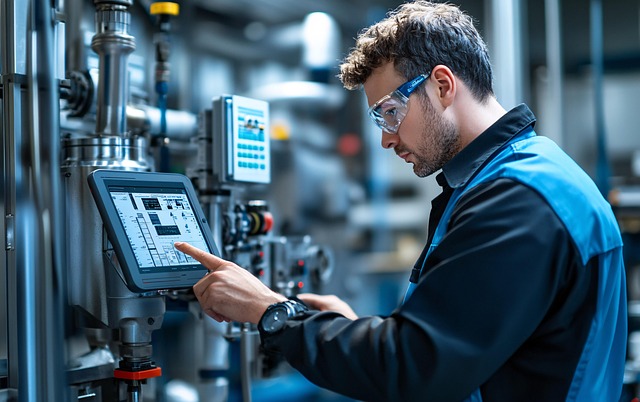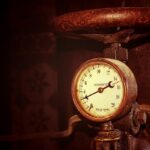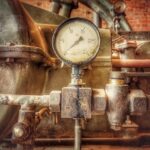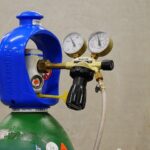Calibration is actually a procedure that includes carefully verifying and then adjusting an instrument. This helps employers to maintain accuracy. It is regarded as a trusted foundation to measure integrity across industries. In almost all types of industries, including electronics, pharmaceuticals, manufacturing, or even research, proper measurements are always important. With these, you can easily eliminate unwanted errors and ensure product quality.
In India, NABL, or the National Accreditation Board for Testing and Calibration Laboratories works to ensure precision and compliance in industries. It is actually an autonomous board. This board works under DPIIT and QCI. It offers accreditation to labs for calibration competence under ISO/IEC 17025.
When you follow the calibration procedure stated by NABL guidelines, you can ensure both traceability and technical precision. Thus, you will always enjoy international acceptance, along with audit readiness. So, in this blog, will talk about effective instrument calibration as NABL guidelines. It will allow you to enjoy desired NABL calibration in Gujarat.
What is Calibration?
Instrument calibration helps in ensuring the accuracy of measurement, traceability and also quality is calibration and testing in laboratories. Usually, this board called NABL provides a very strong accreditation framework in India. It even aligns with today’s global standards.
1. Overview of NABL Calibration
What is NABL?
NABL is a part of India’s Quality Council. The NABL works under India’s Ministry of Commerce & Industry. In fact, it is famous as India’s national accreditation authority for calibration and testing laboratories. The accredit bodies of NABL are based on internationally recognized standardsunder ISO/IEC 17025. The other one is for medical labs that falls under ISO 15189. Apart from this two major labs, there are many others.
Moreover, NABL takes part in mutual recognition arrangements or you may say MRAs with APAC and ILAC. All these together can easily foster international acceptance of results.
Scope for Accreditation and International Recognition
NABL generally covers a broad spectrum of disciplines nowadays. Those include mechanical, electro-technical, fluid-flow, thermal, radiological, thermal, and some more for calibration. Also, it includes several testing fields. For example, chemical, biological, forensic, electrical, thermal, etc.
The strength of this accreditation lies in its wide acceptance around the globe. This is possible due to NABL’s signing of mutual recognition arrangements with Asia-Pacific Lab Accreditation Cooperation and International Laboratory Accreditation Cooperation.
All these together can allow test as well as calibration results issued by all those labs that are NABL-accredited. Thus, all your test results will be accepted globally and you will face minimized trade barriers.
2. Standards Followed
ISO/IEC 17025:2017
This standard governs both the technical needs and management system. Moreover, labs need to follow some other relevant standards, such as:
- ISO, ASTM, or other guidelines those are domain-specific.
- Bureau of Indian Standards or BIS.
3. Statutory Requirements
In many sectors, calibration is a regulatory obligation that needs to follow specific laws to be calibrated regularly by competent labs. Key areas include:
- Food Industry: In this, FSSAI mandates proper calibration of equipment. This helps in food testing and storage.
- Pharmaceutical Industry: As per Good Manufacturing Practices and rules of WHO, instruments that are used in drug manufacturing have to be calibrated.
- Healthcare Industry: You have to calibrate medical devices to ensure patient safety.
4. Types of Instruments to Be Accredited
Today, lots of instruments in several industries need calibration. These are as follows:
- Thermal Instruments: Including temperature sensors, furnaces, ovens, etc.
- Dimensional Instruments: Including micrometers, vernier callipers, dial indicators, etc.
- Electrical Instruments: Including power analyzers, multimeters, oscilloscopes.
- Mechanical Instruments: Including torque wrenches, pressure gauges, tensile testers, etc.
5. When Is It Necessary To Calibrate Instruments?
Generally, the frequency of calibration depends on a few important factors. However, you have to follow a risk-based approach. Those must include:
- Environmental conditions.
- Recommendations of manufacturer’s.
- Historical performance.
- Customer or regulatory needs.
- Usage frequency of instruments.
- Regulatory Compliance
In fact, in most situations, calibration is done:
- After accidents or repairs.
- Annually, as a standard practice.
- When readings are doubtful.
- Before or after a few measurements.
You have to maintain a properly documented calibration schedule. Only then, you can ensure that no instrument is used beyond its calibration validity.
6. When to Get Calibration Done by NABL-Accredited Labs Only?
There are several cases where you must use only NABL-accredited labs. Those are:
- Customer Needs: Many clients or international buyers want calibration from sources that are NABL-accredited.
- Regulatory Submissions: NABL accreditation becomes mandatory when calibration reports are needed by several authorities including BIS, FDA, CPCB, etc.
- High-Risk Applications: Instruments that you use in high-precision environments or even safety-critical research, you must use tools that are accredited by NABL-accredited labs.
- Legal Metrology Instruments: All your measuring tools that are trade-related have to be calibrated by NABL-accredited labs.
Why NABL Calibration is Vital?
Now, let’s go through some notable benefits of following NABL Calibration below:
- Regulatory Compliance
Today, industries like aerospace, pharma, food processing, and even defense usually need NABL-supported calibration to enjoy regulatory approval.
- Assurance of Quality and Risk Management
Just by performing regular calibration, you can avoid mistakes, product defects, equipment issues, and also serious safety hazards.
- Documentation that is Audit-Ready
You will need NABL calibration certificates that must include several comprehensive elements. Those must be traceability paths, measurement uncertainty, dates of calibration, and of course, important technical details. All these will require regular audits.
- Underlying Standards: ISO/IEC 17025:2017
Proper accreditation from NABL has to go by the standard ISO/IEC 17025:2017. You can think it as the reference standard for your calibration and testing lab competence. This standard usually includes:
- Important structural requirements.
- General needs.
- Process Requirements. These include how the results are generated technically.
- Resource Needs. These include employees, environment, and also your equipment.
- Needs for Management System. These include scopes for continual improvements and also notable quality policies.
- Moreover, NABL publishes its own documents. For example, NABL-100B. It clarifies how a lab must apply for as well as maintain accreditation over the years.
Important Technical and Quality Needs of a Accredited Lab
Nowadays, important requirements from the documents of NABL and ISO/IEC 17025 generally include:
- Environmental Control: The environments of calibration must be carefully controlled. Those must include acoustic noise, vibrations, illumination, humidity, temperature, electrical stability, and more.
- Personnel Competence: All your technical employees need to hold appropriate training and qualifications. Only then, they can perform certain calibration tasks. Those usually are having knowledge regarding statistical analysis and uncertainty of measurements.
- Metrological traceability: Calibration has to be linked to all international or national reference standards. Those are done through an unbroken chain.
- Uncertainty of Measurements: All related labs need to estimate and then report uncertainty of measurements related to all calibrations. Those help a lot in maintaining accuracy.
- Records and Documents: All labs must maintain clear documents and records over the years. Those must have all steps and records regarding getting an instrument receipt to certificate issuance. Also, those must have all important records, including the conditions, deviations, results, and of course, the next due date.
- Management of Equipment: All your labs have to maintain a properly documented program for several procedures. Those usually are calibration, maintenance, and even performance verification of your equipment.
Standard Operating Procedure for NABL-Compliant Instrument Calibration
Now, let’s discuss the Standard Operating Procedure for instrument calibration. Also, let’s see the best practices drawn from the guidelines of NABL, along with the workflows of standard calibration.
- Step 1: Instrument Receipt and Inspection
Log the instrument: Try to make a record. There, state the serial and model number, unique ID, operator details, and condition.
Physical Inspection: Look for cleanliness, damages, integrity of packaging, and some other discrepancies. Take note of anomalies and then report them to your client if they are hampering your calibration validity.
- Step 2: Environmental Stabilization Conditioning
Need to stabilize the instrument within the controlled environment of the lab. Ensure that lab maintains all suitable conditions regarding temperature, humidity, illumination, etc.
- Step 3: Selection and Validation of Method
Choose only standardized methods. In case any lab-developed method, try to validate them properly with documented evidences.
- Step 4: Standards and Reference Materials
Calibrated Reference Standards: Make sure that standards are properly traceable through a documented chain.
For Balances: Use weights that are both conditioned and verified properly for accuracy.
- Step 5: Calibration Procedure
Try to use the example of a mass instrument.
Preparation: Look for clean equipment, along with minimum disturbance.
Zero Calibration: Try to use tare function and check drift. Also, before proceeding, resolve all types of drifts.
Apply Calibration Weights: You need to use correct weights across range, along with record readings. Moreover, if required, adjust readings as per manufacturer’s instructions. Finally, remove and then reapply weights.
Step 6: Uncertainty and Estimation of Measurement
Technician need to carefully calculate all uncertainties following the guidelines of ISO. Also, for critical instruments, create an uncertainty budget.
- Step 7: Documentation and Certificate
Record Details: Need to record all important details that must have all details of instruments. Also, deviations, results, uncertainties next due date, etc.
- Step 8: Post Calibration Checks
Need to attach your calibration label with date. Also, write who performed it and the next calibration due date.
- Step 9: Record Keeping
All Records: Need to archive all records, must mention certification records, equipment logs, uncertainty analyses, etc.
Traceability: Create an unbroken documentation from all primary standards to the final certificate.
- Step 10: Quality Assurance
Internal audits: Need to perform audits at proper intervals. This will ensure that data integrity, SOP compliance, and accuracy of documents.
Review Continuously: Must review all your findings and data trends to refine working procedures and staff training.
All these steps are vital for NABL calibration in Gujarat.
Instrument Calibration under the guidelines of NABL is a robust process. This technical procedure is documented properly and even follows all national and international standards. So, to follow the standards of NABL calibration in Gujarat, you may trust Trivedi & Associates.




